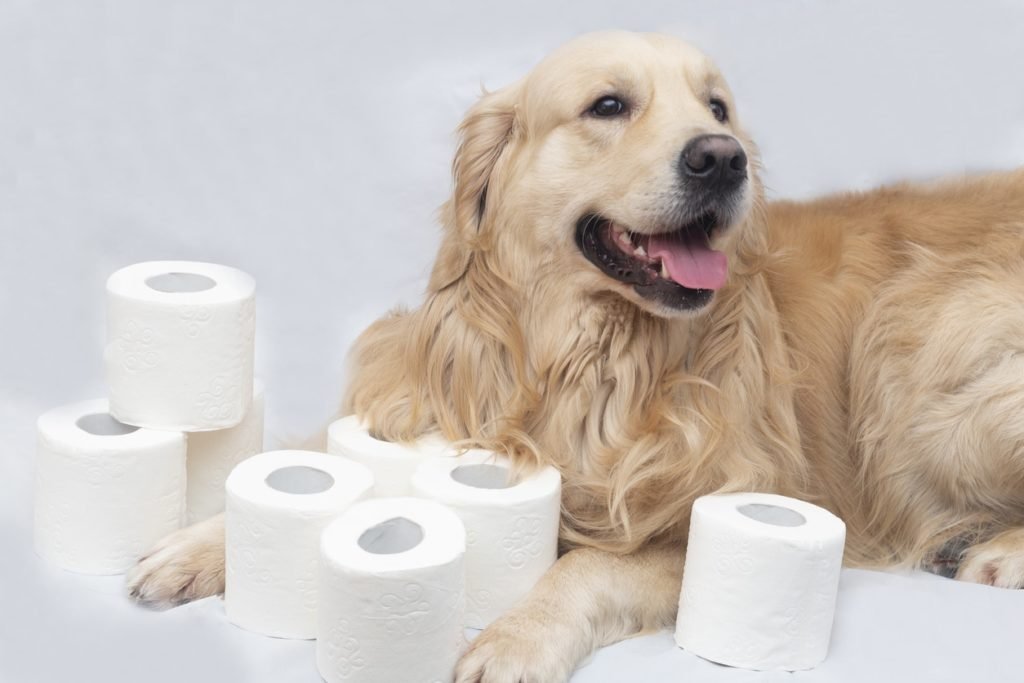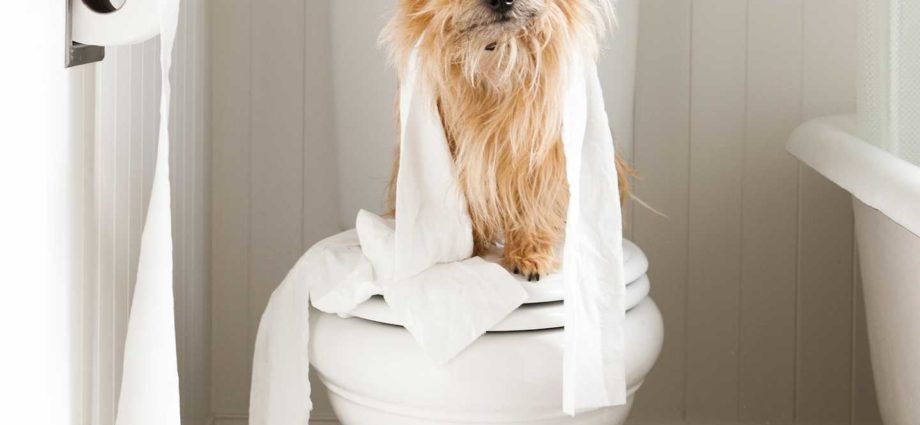If you have actually ever been bothered by diarrhoea, then you understand how your canine feels if it, too, takes place to go through bouts of watery stools. Pet dogs with diarrhoea will generally wish to go outside your house more often than normal. This is the very same as you going to the toilet a lot more often than you typically would. The only distinction is that canines defecate outside the house, not within. It is not truly uncommon for canines to have more regular bowel mishaps. Whatever the case, be it outside your house or within, a canine having diarrhoea must currently inform you to the possibility of more major health issue.
What is Dog Diarrhoea?
Among the most typical indications that something is wrong in your canine, particularly its intestinal system, is the existence of diarrhoea or loose, watery stools. It deserves keeping in mind that canine diarrhoea is not an illness however rather a symptom of a number of illness procedures that in some way trigger the fast transit of stomach contents through the little and big bowels. To comprehend this much better, let us have a look at the regular passage of stomach contents through the alimentary canal.
Food that gets digested in the dog’s stomach becomes a mushy and gooey swelling called chime. This swelling of digested food is pressed into the little intestinal tracts where a range of systems successfully take in nutrients into the blood stream. Water is likewise taken in along the whole length of the bowels, from the little intestinal tracts right down to the big bowels. Bulk of the nutrient absorption takes place in the duodenum and jejunum. As the portion of food travels through the ileum and into the very first sector of the big bowel, extremely minimal nutrients can currently be taken in. Technically, what you now have is a strong moving mass we now referred to as stool or feces.
The longer the time it considers the portion of food to pass the whole length of the intestinal system the more strong and more formed the stool. If the motion of the bowel is extremely quick, extremely little water is taken in into the blood and more water is maintained in the feces. This is why your canine might provide loose, watery stools.
The factor for the fast transit of the feces through the alimentary canal can be various. The intestinal lining is in some way inflamed that it overreacts by increasing its peristaltic motion, assisting in the fast elimination of the feces. Other aspects might trigger these occasions to take place. These can add to the various kinds of diarrhoea that you can see in your canine.
What are the Various Kinds Of Canine Diarrhoea?
As we have actually currently discussed, various aspects can contribute in the fast transit of feces throughout the alimentary canal. One can constantly recognize the possible danger aspect or causative representative simply by just taking a look at the attributes of the watery stool. These can consist of the following.
- Soft stool however without mucous or blood
This is identified by stool that is not well-formed and has a rather extremely soft, nearly sundae-like consistency. If there are no indications of mucous or perhaps blood in the stool, it is frequently a sign of indigestion, food intolerance, or perhaps indigestion, particularly if you can see bits and pieces of your canine’s last meal in the stool. Nevertheless, do not get too positive since it can likewise remain in the preliminary phases of a parasitic infection or perhaps the results of tension fecal incontinence. Regardless, you must keep a careful eye on your pooch and bring it instantly to your veterinarian if its condition aggravates.
- Grayish and oily stool
This is extremely simple to detect. Often you can really see fat beads bubbling or perhaps frothing on the surface area of the stool. It is typically a sign of having actually taken in a diet plan that is high in fat. Nevertheless, if the stool appears grayish in color, be conscious as this generally shows biliary blockage. Bile is what offers the particular greenish coloring in regular stool. The look of a gray stool will frequently suggest a blockage in the circulation of bile from the gallbladder.
- Black, tarry stool
If the stool appears black, nearly tarry and includes a really nasty odor, this is frequently a sign of bleeding in the upper intestinal system, more than likely in the stomach or in the duodenum and jejunum. The reason that it is black is since new blood from the website of bleeding frequently responds to different chemicals discovered in the area. As the stool moves down towards the rectum, time enables it to harden or coalesce to form embolism, offering it its particular tarry, black look.
Nevertheless, do remember that if the stool is not sticky or does not produce a nasty smell, this is frequently the outcome of taking iron supplements along with particular canine medications like Pepto-Bismol.
- Watery
If the diarrhoea churns in a truly watery stool, nearly like the consistency of rice water, be forewarned as this is frequently an indication of a really major issue. Rice watery diarrhoea is generally brought on by Vibrio cholera. The significant threat here remains in the seriousness of the taking place dehydration and electrolyte imbalances. If this is not remedied instantly, the canine might lose its life in a matter of hours since of shock.
- Mucoid
There are numerous reasons you might observe mucous secretions in your canine’s diarrhoeic stool. It can be since of tension, food intolerance, intoxication, colitis, or perhaps the intake of a foreign item. There are a number of more major ramifications of mucoid stools in canines. It is extremely possible that your pooch might currently be contaminated with the dreadfulParvovirus This is particularly real if you have a young puppy in between the ages of 6 weeks and 6 months. Other possible reasons for mucoid stools in canines are the existence of protozoans, digestive tract parasites, clostridial enterotoxicosis, or perhaps fungal infections.
- Presence of worms and other organisms
Digestive tract parasites such as roundworms, flatworms, and even hookworms sometimes go through the stool after being shed from their accessory in the alimentary system. If you see any of these parasites along with other organisms, it is frequently advised to take your pooch to the veterinarian together with the organism that was passed in the stool for appropriate recognition. This can assist in the decision of the suitable treatment.
- Stool with streaks of new blood
If you see streaks of intense red, new blood in your pooch’s stool, it is frequently a sign of bleeding someplace in the lower intestinal system. Due to the fact that it is much nearer to the rectum, the blood does not have a lot of time to embolisms and as such new blood generally appears. Streaks of blood in some cases are because of the rupture of capillary in the anal canal as it gets inflamed by the death of strong stool. If you see significant quantities of fresh blood, waste no time in bringing your canine to your veterinarian for appropriate medical evaluation.
- Soft or watery stool with blood
Bloody diarrhoea can be produced by a range of health conditions. It can be since of ischemic colitis or perhaps the usage of nonsteroidal anti-inflammatory drugs along with particular chemotherapeutic representatives. It might likewise be since of an existing inflammatory bowel illness, cancer, or perhaps diverticulitis. Bacterial, parasitic, helminthic, and viral infections can likewise produce bloody diarrhoea. This is various from the blood-streaked formed stool we talked about above. A few of the more typical reasons for bacterial infection that produce bloody diarrhoea can consist of Salmonella, E. coli, Yersinia, Campylobacter, Clostridium, and Shigella, to name a few.
- Yellow stool
It truly is not yellow per se however the stool will handle a rather yellow-colored color. If you observe this, it may suggest a blockage in the pancreatic duct, persistent pancreatitis, or perhaps cystic fibrosis. High fat canine diet plans can likewise in some cases cause the death of yellow-tinged stool.
What is the Significance of Diet Plan in Dog Diarrhoea?
Among the most typical causes of diarrhoea in canines is a modification in their dietary patterns or perhaps the intro of particular foodstuff that might distress their stomachs. This is particularly real amongst pups as their gastrointestinal systems are not yet totally mature. Due to the fact that of this, there is a propensity that they will not have the ability to process totally their food and this can cause diarrhoea.
Here are some methods we can assist keep their stomachs at ease.
- Do not offer your pups table scraps
Male has a flair for sharing whatever food exists on his table with his buddy. Regrettably, a lot of the food products that are thought about to be specials for us can be downright hazardous to canines, particularly pups. Vegetables and fruits, while these are healthy, can frequently produce diarrhoea in canines and pups particularly when consumed in big quantities. In addition, supplying a range of food can make the decision of the causative representative of diarrhoea to be rather hard.
- Stay With the very same diet plan
As we have actually currently discussed above, it is necessary to keep pups in the very same diet plan till such time that they are all set for adult canine food. The reasoning is easy. By staying with the very same diet plan, you can quickly recognize the active ingredient that might be triggeringstomach upset in your puppy This likewise enables you to develop a standard for your pup’s stool. Need to there be an unexpected modification in the consistency or perhaps nature of its stool, it would be easily recognizable.
- Monitor the chewing activities of your pup
Young puppies are extremely solid when it concerns chewing. Their chewing habits is their methods of exploring their world. As such, there is frequently a propensity amongst puppies to chew and consume things or items that they must not. Young puppies do not have any concept on what items are safe to chew on. It’s all part of the knowing procedure. It is for this specific very same factor that you need to watch their playtime activities along with their time outdoors as they can consume things that might damage them.
How is Dog Diarrhoea Treated?
Like all health conditions, the management of diarrhoea is two-pronged. Given that it is a sign or a symptom of a hidden issue, dealing with the primary reason for the issue can successfully minimize, if not get rid of, the occurrence of diarrhoea. If the diarrhoea is brought about by bacterial infection, then dealing with the condition with suitable canine prescription antibiotics can assist get rid of the infection and, therefore, get rid of diarrhoea.
The 2nd method is to avoid or handle any of the issues connected with diarrhoea. Dehydration is a really major risk as are electrolyte irregularities. Extreme dehydration can frequently cause death for the easy factor that the blood will be nearly diminished with its fluid element that there just isn’t adequate blood volume to sustain life any longer. Hypovolemic shock arises from serious dehydration. This causes a lowering of the high blood pressure to a point when say goodbye to oxygen is being provided to the tissues, causing cellular and tissue death.
It is therefore, crucial to keep canines hydrated to assist avoid dehydration. You can require fluid into your canine or you can supply them with canned canine food as this is typically 80 percent wetness. If the dehydration is serious enough, aggressive intravenous treatment might need to be started by your canine’s vet.
Fluid losses are not the only issue in diarrhea. You will likewise have issues in electrolyte concentrations. If the electrolyte imbalance is moderate to moderate, then you can supply your pooch with oral rehydration salt option.
What is Antibiotic-Induced Diarrhoea?
 We did point out above that particular kinds of diarrhoea can be brought on by particular medications like prescription antibiotics. Diarrhoea in this case is more a negative effects of the prescription antibiotics. This is since the primary system of action of prescription antibiotics remains in the killing of prone germs.
We did point out above that particular kinds of diarrhoea can be brought on by particular medications like prescription antibiotics. Diarrhoea in this case is more a negative effects of the prescription antibiotics. This is since the primary system of action of prescription antibiotics remains in the killing of prone germs.
Regrettably, it does not compare pathogenic germs and gut-friendly, advantageous germs. What takes place is that the antibiotic representative eliminates both the bad and the excellent germs. Given that excellent germs are required for healthy gastrointestinal performance, its loss can cause a significant decrease in ideal gastrointestinal performance. Diarrhoea occurs.
It is necessary to identify diarrhoea brought on by a disease and diarrhoea brought on by prescription antibiotics. If the diarrhoea is because of the antibiotic treatment, it is frequently advised to supply helpful management of the diarrhoea rather of stopping the antibiotic treatment entirely. This is since stopping the treatment will increase the danger of establishing antibiotic resistance while likewise not resolving the primary infection. If, nevertheless, the antibiotic-induced diarrhoea deviates for the even worse, you need to ask your vet for suitable action.
If your canine is on an antibiotic treatment, you can in some way assist lessen the occurrence of antibiotic-induced diarrhoea by doing the following.
- Supply your canine with the suitable probiotics as these can assist renew the variety of advantageous germs that might have been eliminated or suspended by the antibiotic in your canine’s gut. There are a variety of canine foods that include probiotics included, although you may have a far better result if you offer an item that has greater concentrations or nest forming systems of gut-friendly germs.
- Offer your canine a rather dull diet plan including 3 parts rice and one part boiled, unseasoned chicken. This must assist lessen aggravating the stomach lining, reducing the occurrence of diarrhoea.
- Contact your vet if you can administer an anti-diarrhoeal representative to your pooch. under no scenario are you expected to offer your canine any medication that may just intensify its condition. Constantly consult your veterinarian.
- Deal your pooch a lot of water to consume. A better option is to supply oral rehydration salts option such as Pedialyte to assist renew lost electrolytes and fluids.
How Can Dog Diarrhoea be Avoided?
Avoiding canine diarrhoea is rather simple. Given that there are kinds of diarrhoea that are extremely contagious, keeping your canines far from other canines, particularly roaming ones, can help in reducing the danger of contracting contagious kinds of diarrhoea. Having your pooch immunized with their advised shots must likewise provide your canine defense while likewise improving its immune performance. Possibly the very best method to keep your canine’s gut healthy and diarrhoea-free is to adhere to high quality and safe canine food.
Diarrhoea in canines might be thought about by some as absolutely nothing more than the death of soft, loose stools. Nevertheless, you now understand that this can be an indication of a major medical condition that might need instant veterinary attention. By staying with excellent quality canine food and preventing offering your pooch table scraps, you can in some way assist guarantee that diarrhoea will be kept at bay.



1 Comment